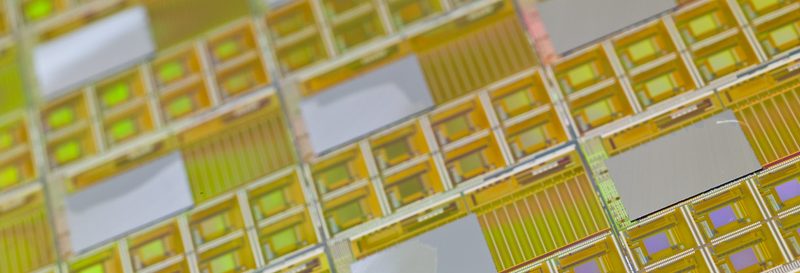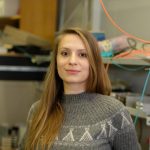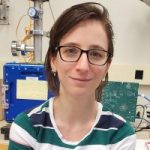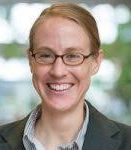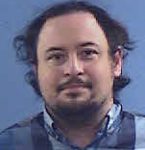The detector R&D group is seeking proposals for new initiatives in programmatic detector R&D. While all R&D ideas will be considered, priorities will be given for ideas aligned with the strategic directions of the group in Pico Second Timing and Noble Element Based detectors, including light and charge collection, as well as novel Blue Sky R&D directions.
The magnitude of this seeding support is on the order of $50k including overhead. It is meant to give an opportunity to test initial ideas before pursuing larger support for programmatic detector R&D.
Applications are made in a form of a one page proposal to the Detector Advisory Group by April 15th, 2024 in an email to petra@fnal.gov. It should include the scientific motivation, R&D goals and plans to be achieved in a year. Please include a list of required M&S items with associated costs and a list of technical/engineering personnel and the hours requested (scientists’ time cannot be supported). Eligible PIs have to be Fermilab employees, but co-PIs from other institutions are encouraged. Please use the template found here.
After the submission deadline, the advisory group will form a short list of applicants who will be requested to give a short presentation to discuss the details of the proposal. The final recipients of the support will be selected shortly afterwards and work can start immediately.
2024 Winners
Co-PI: Alex Drlica-Wagner (Fermilab), Danna Freedman (MIT)
Constructing a prototype directional dark matter detector
The proposed experiment utilizes novel, anisotropic solid scintillating crystals, in particular trans-Stilbene, to create a modular, segmented array of detectors that can be read out using photo-sensitive Skipper CCDs developed at Fermilab. Such an experiment is to our knowledge the only proposed sub-GeV DM detector with the potential to unambiguously observe DM scattering using directionality.
Co-PI: C.Peña, J.Estrada, S.Xie (all Fermilab), M.Shaw (JPL), J.C.Helo (Universidad de la Serena), M.Bonati (Noir Labs), W.Brooks (Universidad Santa María)
Building a portable Skipper-CCD camera for quantum imaging and astronomical applications
We propose to use state-of-the-art low jitter superconducting nanowire single photon
detectors (SNSPD) for a temporal intensity interferometry experiment. By employing
SNSPDs, the best single photon detectors available, with 10 ps time resolution, the
experiment paves the way towards the realization of the next generation of long-baseline
telescopes instrumented with time-resolved capabilities.
Developing a fast silicon tracker for gamma-ray astrophysics using LGADs
Low Gain Avalanche Detectors (LGADs) have been developed for precision timing in collider experiments, but they have also been identified as an ideal technology to track gamma-rays and cosmic-rays for space-based astroparticle experiments. This proposal aims to demonstrate the potential of LGADs in silicon trackers for next-generation gamma-ray telescopes capable of detecting ~MeV-scale gamma-rays.
Co-PI: C.Peña, S.Xie (all Fermilab), M.Shaw (JPL), J.Luskin (University of Maryland)
SNSPD for Particle Detection
We propose to start the development of a new R&D thrust at Fermilab that harnesses the unique capabilities of quantum sensors to take high energy particle detection to a new regime in sensitivity and precision. We will combine the ultra-low energy threshold, low noise, and pico-second level time resolution of superconducting nanowire single photon detectors (SNSPDs) to initiate the development of an optimized sensor for the detection of high energy particles. The newly developed SNSPD promises to have applications ranging from 4D-tracking and particle identification to the detection of rare interactions of new particles with millicharges.
Previous Winners
2023
Co-PI: Jim Hirschauer, Jim Freeman, Hans Wenzel (all Fermilab)
Maximal Information Calorimetry – characterizing picosecond timing capabilities of total absorption dual-readout calorimeters
This proposal aims to understand the picosecond timing capabilities of dual-readout (DR) crystal calorimeters. The DR method is the separate measurement of the electromagnetic and hadronic components of a hadronic shower through the independent readout of scintillation and Cerenkov light. This optimizes energy resolution through separate calibration of each component. We propose to study the timing resolution achievable with such a DR calorimeter using the separate time measurements of scintillation (S) and Cerenkov (C) light pulses. This proposal brings the new thrust of picosecond timing to the CalVision consortium, which performs R&D for DR calorimetry for the FCC-ee.
Co-PI: P. Kwiat (UIUC), D. Rodrigues (IFIBA-UBA), M. Makler (ICAS-UNSAM)
Building a portable Skipper-CCD camera for quantum imaging and astronomical applications
The aim of this proposal is to produce the technological advances for deploying Skipper-CCDs in portable systems taking advantage of our developments in electronics, packaging, and new commercial micro coolers. The technical objectives include the design and construction of the vacuum chamber for the camera, which needs to maintain a vacuum pressure of 10^-5 Torr without a supporting pump. The current vacuum chambers used for Skipper-CCDs are designed for the laboratory environment, facilitating quick access to the sensors but are bulky and require large supporting equipment such as vacuum pumps. For the portable system, we plan to replace these vessels with a maintenance-free chamber that only requires a single pumping during the initial assembly and can be operated without the need for a vacuum pump.
2022
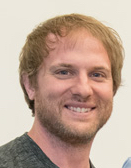 PI: Guillermo Fernandez Moroni
PI: Guillermo Fernandez Moroni
Co-investigators: Ana Botti (FNAL), Miguel Sofo Haro (CONICET-Comisión Nacional de Energía Atómica, Bariloche, Argentina), Fernando Chierchie (CONICET-Universidad Nacional del Sur, Argentina), Eduardo Paolini (Universidad del Sur, Argentina)
MAS-CCD for the next generation of astronomical instruments
The Multi-Amplifier Sensing CCD (or MAS-CCD) has multiple readout stages placed in the same charge-pipeline that are able to serially and independently sample the same charge packages in a non-destructive way. Each of these readout stages has a Skipper-like sens-node structure with the capability of moving forward the charge package instead of being dumped after readout. This architecture allows to reduce the readout time by adding more readout stages, has the potential to be more resilient to failures and may allow the implementation of new noise-suppression techniques. The MAS-CCD has been already identified as a candidate sensor technology for the next generation of ground based astronomical instruments for large surveys thanks to its ability to reduce the readout noise through the non-destructive readout and, at the same time, overcome the limitation of the slow readout speed of the Skipper-CCD.
Co-PI: Maurizio Pierini (CERN)
Liquid argon calorimeter with metal electrodes serving as a target for detection of long-lived particles produced and trapped at the LHC
A two-stage strategy is proposed to search with unique sensitivity for exotic long-lived particles that can be produced at LHC, become trapped in detector material, and decay later. The experiment relies on an array of metal rods combined to form a high-density target in one of the experimental caverns. After exposure to radiation from the proton-proton collisions, the rods are individually immersed in a liquid argon volume in a different hall and instrumented as calorimeter electrodes, where out-of-tme decays could produce a detectable signal. The main goal of the proposed R&D project is a small-scale demonstrator setup for serving as a proof-of-principle of the proposed particle detection strategy.
Optimizing the DUNE HPgTPC design
The primary figure of merit that can be used towards the optimization of the DUNE HPgTPC design is the amplitude of the induced charge that can get collected, something that is referred to as the gas gain. The so-called “gas gain” of gaseous detectors is inversely related with the pressure at which the detector is operated. Gas gain is one of the R&D areas my project will pursue: to design and operate a small TPC at high pressure (up to 10 atmospheres), where one challenge is being able to achieve a high gain compared with the intrinsic electronics noise, which speaks directly into how well the HPgTPC would be able to reconstruct the low-energy particles exiting a neutrino-nucleus interaction. I will pursue tests of an alternate design: a GEM-based TPC.
2021
Iris-Connected Multi Cavity Array for High Frequency Haloscope Detectors
Haloscopes axion detectors with RF cavities have the advantage of signal enhancement by forming standing waves at the cavity’s resonant frequencies that will interact with the axions in the presence of the magnetic field through the inverse Primakoff effect. To scan at larger mass ranges the cavity physical dimension will scale down with frequency necessitating the use of multiple cavities in order to maintain the detection volume which in turn controls the sensitivity and the scan rate of the haloscope detector. Coming from the particle accelerator world, where multicell cavities are routinely used and employed in particle accelerators, I thought about using a similar concept for axion haloscope detectors. In this project I propose to use the same concept for axion haloscopes, building a 4 cavity array, where the four cavities will be connected together with irises. We basically end up with a structure that has modes residing in the four cavities collectively resolving the technical challenge of coherent signal combination.
VUV Imaging in Liquid Argon
This is a proposal for a new detector for a popular medium: liquid argon (LAr). The detector would attempt to directly image LAr scintillation light by using a VUV (vacuum ultra-violet) image intensifier. In traditional LArTPCs (liquid argon time-projection chambers), there are typically 10s to ~100 light collection channels giving information on how much light was collected in a given region of a detector. With a VUV image intensifier, there would be thousands of channels (mega-pixels even) producing an image of the interaction. The motivation is basic R&D: understanding if one can directly image the scintillation light from argon ionization. If it is possible, one could use it to literally look at interactions from particles in new way and compare to LArTPCs, and it could be used to identify electrostatic weaknesses in current LArTPC designs.
PI: Jacob Zettlemoyer
Co-PIs: Michael Fabbraro (ORNL), Matthew Toups (Fermilab)
Introduction of a Free Proton Target in Liquid Argon Detectors through Methane+Xe Dopant Mixtures. We are proposing to determine the feasibility of measuring scintillation light in a methane+Xe doped liquid argon system at the 1% methane level. This will be achieved by comparing scintillation light collection from pure argon, a methane-argon mixture, and a methane-Xe-argon mixture at the level of 1% methane and O(100 ppm) Xenon concentration. A light detection system will be designed that is sensitive to both the 128 nm scintillation light from argon using existing VUV SiPMs and the ~170 nm scintillation light from xenon using an existing photomultiplier tube. The methane will be introduced using nonflammable P-10 (90% Ar, 10% CH4) gas after designing an injection system.
2020
Co-PIs: Artur Apresyan (Fermilab), Karri DiPetrillo (Fermilab)
Advances silicon timing sensors for future trackers
This proposal seeks to measure the spatial resolution and timing performance of existing trench-isolated and AC-LGAD sensors using the Fermilab Test Beam Facility and the timing lab at SiDet. As an outcome of this effort, we will refine the sensor and electronics designs, targeting the first demonstration of a multi-layer tracking telescope achieving the spatial and time resolutions requirements for trackers at future colliders. Measurements of prototype sensors as well as the multi-channel tracker system will require the development of dedicated readout electronics and data acquisition. Due to the unique signal sharing characteristics of AC-LGADs, simultaneous readout of multiple channels is required. The readout of our prototype detector will be performed through a new generation of fast, low-noise 25-channel readout boards to enable precision time resolution measurements
Initial evaluation of electron proportional scintillation in xenon-doped liquid argon using thin wires
This initiative aims to produce and evaluate charge amplification via the electron proportional scintillation process in xenon-doped LAr using thin wires. The proportional scintillation requires a lower electric field and avoids electron avalanches, reducing the heat input around the anode and potential bubbles. Xenon-doping is reported to be helpful for getting more stable proportional scintillation process, while electric field produced by thin wires is relatively easy to model and control. If the idea is proved, the proportional scintillation process will lower the energy threshold of LAr TPC detectors and be a promising application in the field of low energy particle physics, such as supernova/solar neutrino measurement, direct dark matter search, neutrino coherent scattering study, and short-lived particle detection.
Co-PIs: Matthew Toups (Fermilab), Andy Mastbaum (Rutgers University)
Using MicroBooNE to Uniquely Study Doping Large Liquid Argon TPSc
We aim to use MicroBooNE as a unique testbed of both dopants in a large LArTPC. We will measure the impact of these dopants using muons and radioactive decays. These tests would study the impact on our reconstruction efficiency for through-going and stopping muons tagged with the CRT and as well as for the radioactive decay products of radon gas. We aim to perform four main measurements by doping with xenon and allene : (1) the impact on the energy calibration using tagged muons, (2) the impact on diffusion and drift velocity using tagged muons (3) the reconstruction efficiency of radon decay daughters by tagging the 164.3 μs half-life coincidence signal of BiPo beta-alpha decays using the PMT system and
studying the TPC signature and (4) the energy resolution of these tagged 8 MeV alpha and 3 MeV beta emerging from the BiPo decay.

